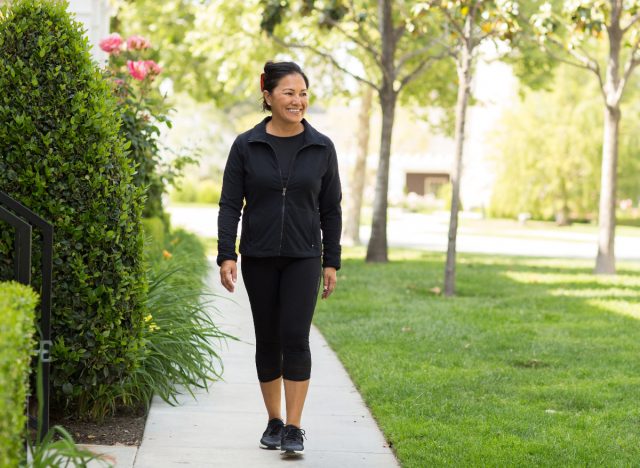Just 2 Minutes of Walking After a Meal Can Lower Your Blood Sugar

Perhaps you’ve been diagnosed with prediabetes or diabetes, or you know from your family history or your doctor that you’re at risk for high blood sugar. Either way, lowering and managing your blood sugar is a multi-faceted process that starts with making healthy choices, particularly when it comes to what foods you eat.
But that’s just one piece of the puzzle. Along with a balanced diet and doing things like managing stress and avoiding smoking, research has found that regular movement—even short, low-intensity movement—can have a significant effect on lowering your blood sugar.
According to a 2022 report published in Sports Medicine, taking two- to five-minute walks right after a meal can lower your risk of type 2 diabetes by helping you to manage your blood sugar levels.

This meta-analysis looked at seven different studies to determine how breaking up long periods of sitting, either with standing or taking a short walk, could impact a person’s blood sugar and insulin levels. Most of the research participants throughout the studies had no previous diagnosis of diabetes or prediabetes.
What they found after gathering the data was that taking a two- to five-minute break every half hour to either stand or walk helped to lower blood sugar levels. However, while taking a break to stand was still found to be beneficial, it was walking that helped both blood sugar and insulin levels (standing did not have an impact on insulin). Further, they found that walking also helped blood sugar levels rise and fall at a more gradual rate.
“Exercise, specifically cardiovascular exercise, pulls sugar out of the blood via a different pathway and makes your cells more sensitive to uptake glucose (sugar),” says Amy Goodson, MS, RD, CSSD, LD, author of The Sports Nutrition Playbook and member of our Medical Expert Board. “So, walking or exercise alone can help with lowering blood sugar after a meal.”
Goodson also notes that “cardiovascular exercise can actually have a long-lasting effect, meaning that it makes your cells more sensitive to uptaking sugar from the blood for the 24 to 48 hours after.”
These findings are promising because many people may feel that they have to do long, intense workouts in order to keep their blood sugar levels at bay. These findings indicate that it’s actually not as difficult or time-consuming as we once thought. Taking just a few minutes to walk around after a meal and taking short breaks from sitting periodically can have a meaningful impact on blood sugar, and by extension, your overall health.
Of course, it’s important to note that this doesn’t mean you can eat whatever you want as long as you take a walk afterward. As Goodson reminds us, the best way to manage your blood sugar is ultimately “to manage what you are eating at meals and snacks, because eating smaller, more frequent meals containing high-fiber carbohydrates and protein can help blood sugar gradually raise and lower versus having blood sugar spikes and drops.”









